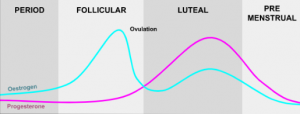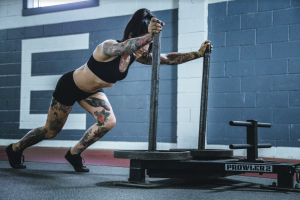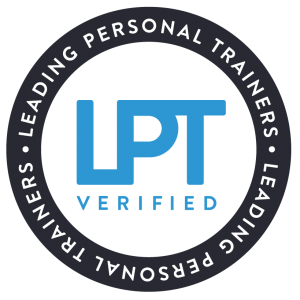(WTF) What The Flo?! – Part 2
Cycle Syncing
By Louisa Hockley

As we know, our hormones (oestrogen and progesterone) fluctuate drastically over the course of one menstrual cycle. However, our period itself is not detrimental to performance, but the PMS symptoms we experience can affect how we feel (mentally) and perform (physically). Understanding what is going on hormonally, allows us to adapt our training and nutrition to do what is best for our body during each phase, this is known as cycle syncing.

- Period Phase
During the period phase you may experience symptoms such as cramping, bloating, back pain, sore breasts, constipation, diarrhoea and so on… It is particularly important to listen to your body. It can feel really hard to go and do a strength, run or HIIT session when your body is not up to it. Instead, opt for lower intensity sessions and focus on core engaging moves, such as Pilates and yoga flows, this will aid with cramping and bloating. Lower the intensity too, if you experience sore breasts, switch up your jumping HIIT session for a low intensity steady state (LISS) run or cycle.
Energy and focus can feel low in this phase, so increase your intake of magnesium and zinc rich food. This includes dark chocolate, leafy greens, lentils, cashews and seeds.
- Follicular Phase
Motivation increases in this phase and it’s time to push for PB’s. Ovulation occurs at the end of this phase which is where you can experience a spike in testosterone, meaning it’s time to get in some heavy strength sessions and higher intensity workouts. High intensity sessions and strength training during this phase build up to 15% more muscle than other phases of the cycle, studies have found power output to be higher in the follicular phase compared to luteal phase.
Don’t skip carbs! As you up your load and intensity it is vital to fuel your body. A 3:1 (carbs:protein) ratio is ideal. Aim to eat 2-3 hours pe-workout with atleast 50% of that meal being carbs. Up to 30 minutes post-workout go for a carb rich meal like a smoothie containing seeds, fruit and nut butter.
- Luteal Phase
Motivation may drop in this phase as progesterone rises, look at gains that can be made in the cardiovascular area. This includes low intensity steady state cycling, swimming and walking. However, if you are motivated to strength train, then go for it!
Fats are being utilised over carbs for fuel and digestion slows. Remember to stay hydrated and eat little but often. Help curb cravings by eating meals roughly every 3 hours and choose slow release carbs or protein snacks.
- Pre-menstrual Phase
The key is to move. Listen to your body and if you’re experiencing cramping, try some core-engaging yoga flows. Boost endorphins with a fast-paced hard run, or if energy is on the lower side, go for a walk. Studies have shown a reduction in PMS symptoms with regular exercise (it is not the type of exercise one but the regularity of it).
Even though you may feel tired from disturbed sleep, try to ease off the caffeine. Go for high protein breakfasts like porridge with berries and nuts, to help with the fatigue.
The most important thing is to listen to your body. If you can, take time to plan your training and meals around your cycle and each phase. It may take some time to get used to and to feel the benefits, but once it clicks, PMS symptoms no longer rule your day to day and you can continue to make gains in the gym whilst feeling your best.

About the author
I am a Level 3 qualified Personal Trainer at Halo Gym and have an MSc in Sports Performance and a BSc in Sports Science. I have a keen interest in female health and take a holistic approach to women in sport, from the general public to elite female athletes. My goal is to educate and empower women, and to help them make gains in and outside of the gym.





